INTRODUCTION TO OUR COLORING PAGES
Our intention with the Coloring pages and books is to fill it with historically and culturally accurate images of both the Wampanoag and the Pilgrims. We hope this will be a good start for our children in correcting the vast amount of miseducation and especially in ridding ourselves of all types of prejudice, most importantly stereotyping, and we hope these images stimulate questions and thus create a renewed interest in history.
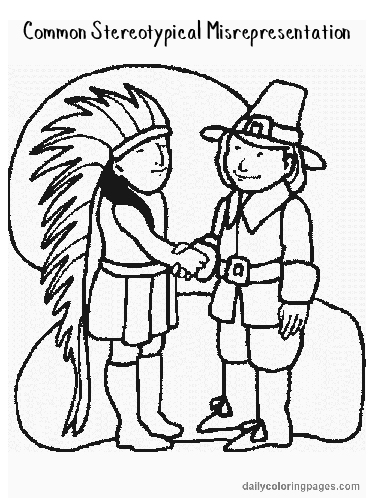
As an additional note on stereotyping - the Pilgrims are stereotyped as badly as the Wampanoag. Pilgrim people are depicted wearing somber black clothes with big white collars and men with hats and silver buckles. Wampanoag people are depicted as Plains Indians living in Tipis (Teepees). These are historically and culturally incorrect.
The manner of dress in typical Pilgrim imagery was common for "Puritans". The Pilgrims were not Puritans, they were Separatists, and did not have a particular manner of dress other than the clothing of the average person in England during the seventeenth century, which was rather colorful. Besides, the Puritans were not in Plymouth at the time of the first Thanksgiving. Their history begins much later.
Native images typical in the majority of coloring books do not depict the Wampanoag. These images are usually depicting Plains Indians living in tipis with large eagle feather headdresses and are just as historically and culturally incorrect as the Pilgrim stereotype. This is miseducation and in order to correct this, we also intend to add explanations and stories to the coloring pages so they can be used as teaching tools. The accurate information about the Wampanogg and Pilgrims is fascinating.
Another of our intentions is to create similarities in the images of Pilgrims and Wampanoag so our children can see the common humanity in all of us. As an example, on our "Clothing pages", the coats show Wampanoag and Pilgrim men and women in similar poses and the information is only about the difference in materials used, with the focus on the fact that all humans need to be dressed warmly in the colder weather.
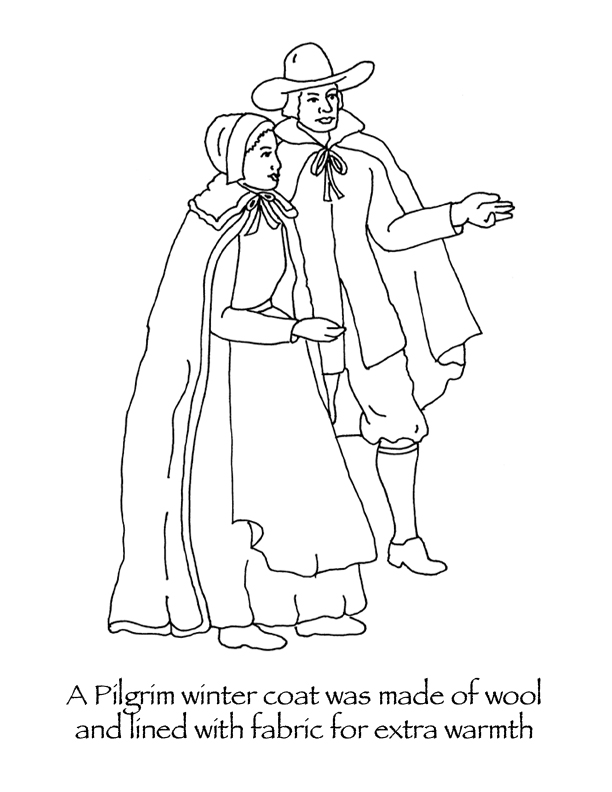
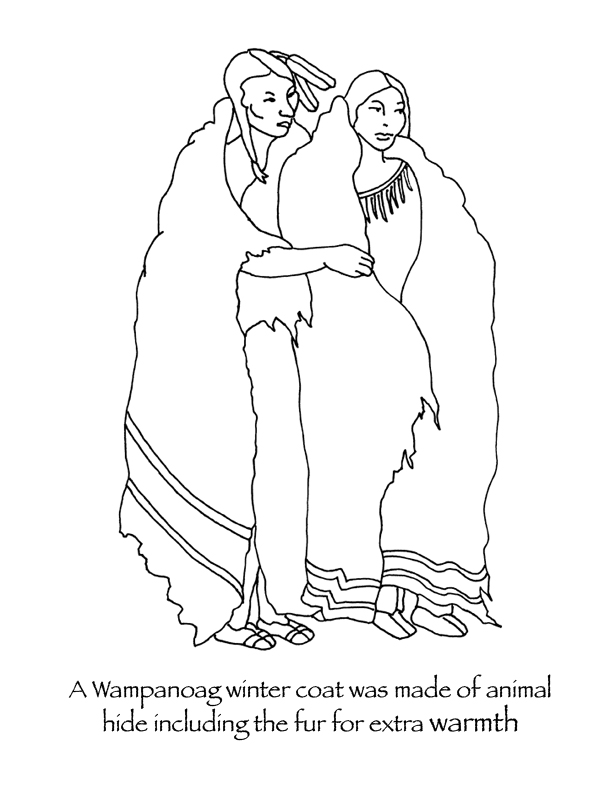
On the "People pages" our first images depict prayer or spirituality since this was a priority for both Wampanoag and Pilgrims. Rather than stress the difference, we've added similar poses with the caption "... on the same earth under the same sky." You might also notice that both women and men are depicted. It is far too frequent to leave women out of the picture when it comes to religion or spiritual practices. Our common humanity includes both genders.
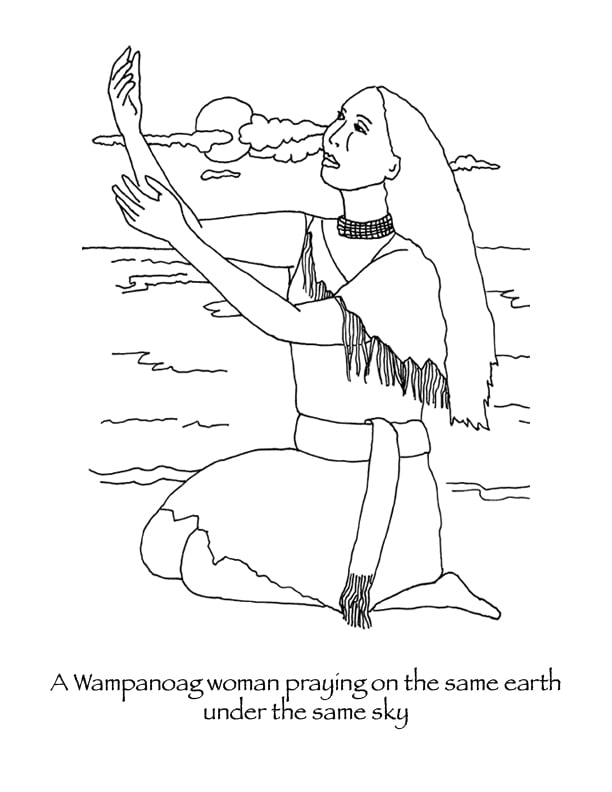
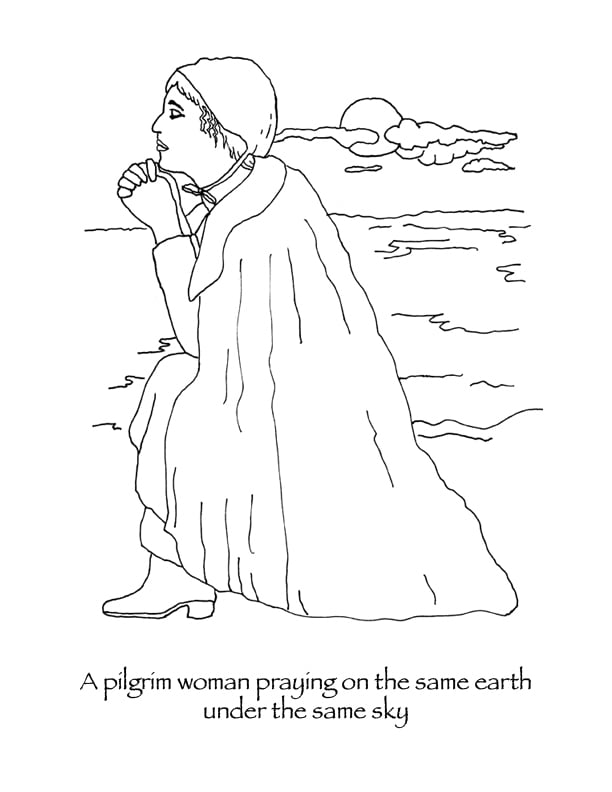
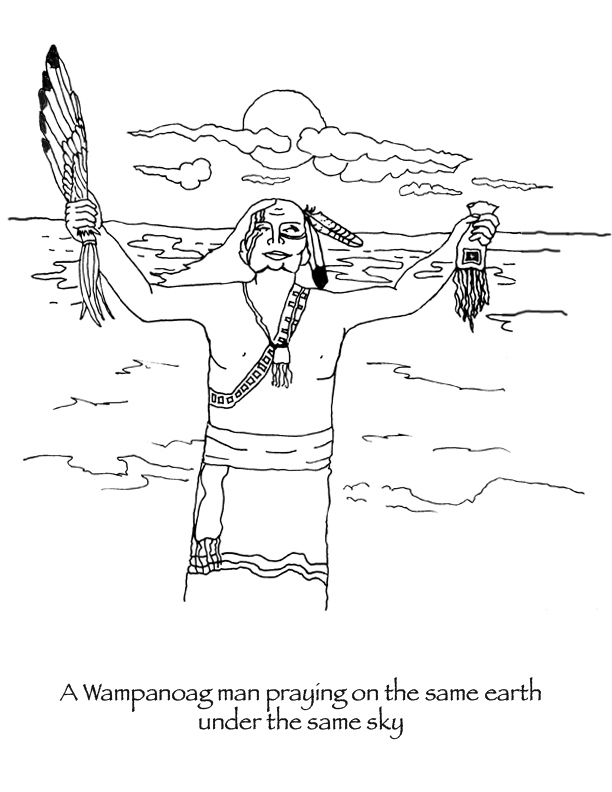
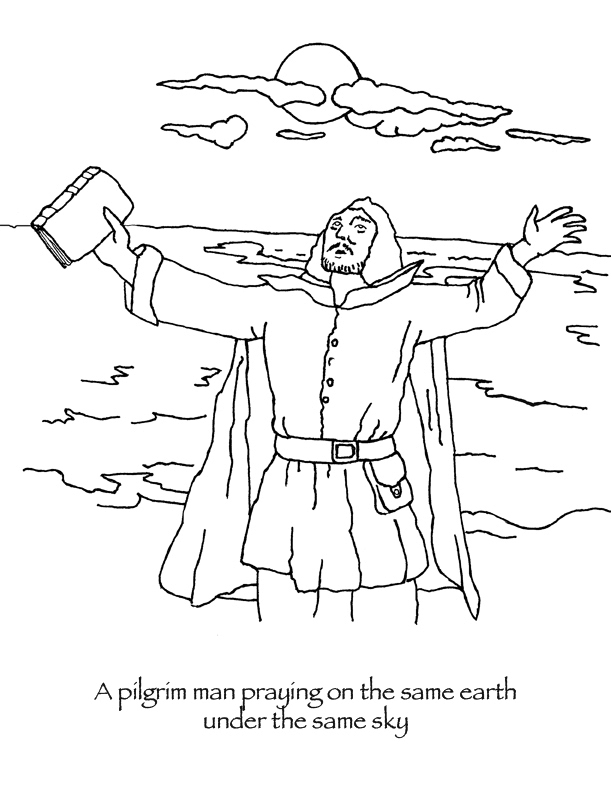
On the "Food pages" we naturally have stressed the Wampanoag since the food at the first Thanksgiving was from them and their land. But if you notice on the Three sisters pages there is one page where the Wampanoag women are offering a basket of food to a Pilgrim woman with the caption of "Three sisters plus one". Again a stress on our common humanity through the need for food.
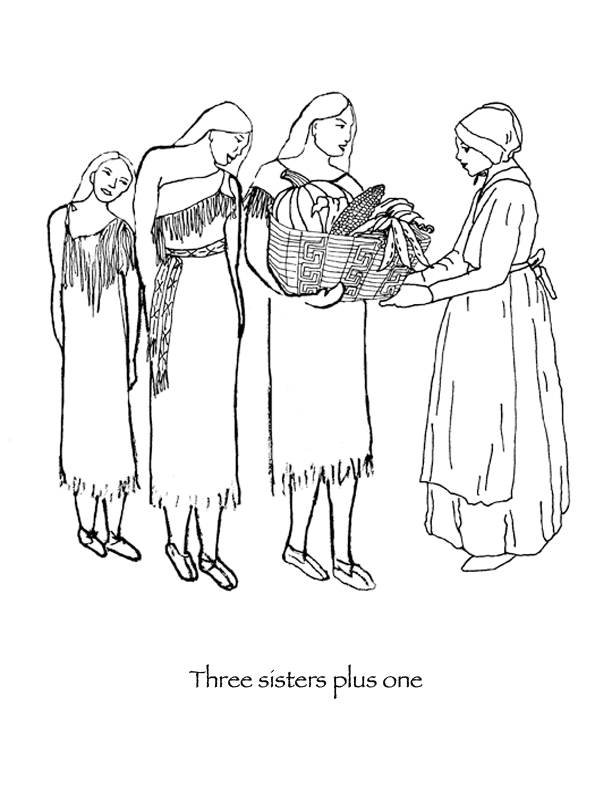
There is also a lot of misinformation regarding the foods eaten at the time of the first Thanksgiving. And we can imagine that many of you are as tired of the plethora of turkey images as we are. Besides, turkey wasn't the mainstay at the first Thanksgiving, it was deer and fish and some fowl, such as geese and ducks. We hope to clarify this and create pages that will educate about the food of the time and also demonstrate how these foods evolved all the way into the multi-cultural aspects of our current times and how we experience Thanksgiving.
Throughout our coloring pages you might notice the lack of images of children and also of Wampanoag and Pilgrim children mixing with each other. One of the reasons the Pilgrims came to this land was so their children would not take on the culture and language of Holland where they had exiled themselves rather than face persecution in their home land of England. This is understandable and as a natural consequence, when in this land, their children seldom, if ever, mixed with Native children. And in actuality it is also probable that the Wampanaog and other Native Nations felt the same. Although, we have included both, they are on separate pages. Another thing to remember is there were very few children in Plymouth during the first Thanksgiving. There were two infants and four children from 2 to 6 years of age. Although, we will not stress the idea that Wampanoag and Pilgrim children did not mix and we will add images of children so our contemporary children can more easily identify with the time, yet we will remain cautious of misrepresentation.
We intend to create many more pages, but it is slow in the process since these pages are original art done by Paula and not simply reproduced from some other source. We hope you can be patient with us during this process. Also, any suggestions, corrections or ideas are always welcome. It takes a village...
With much love,
Lea and Paula
